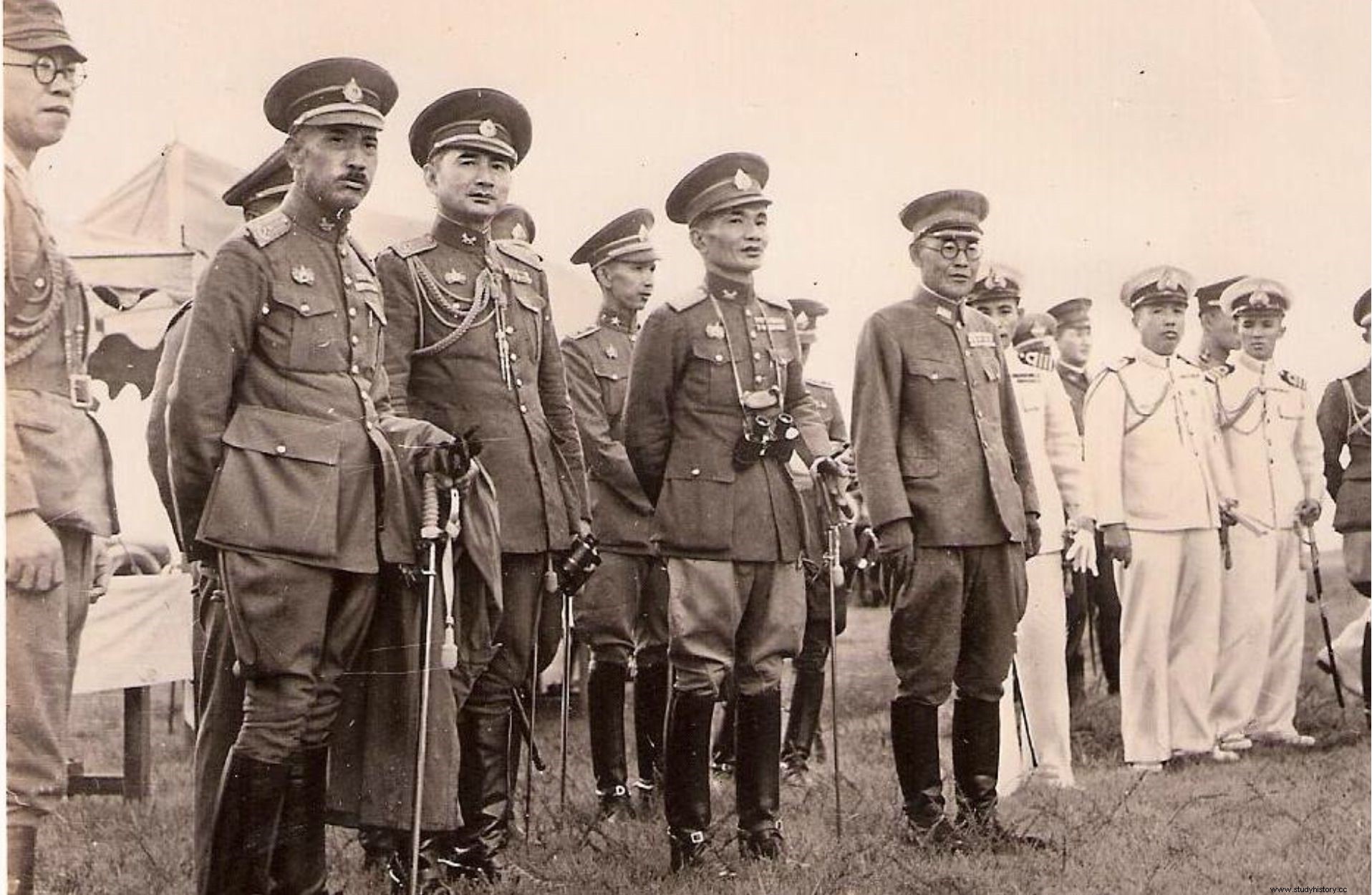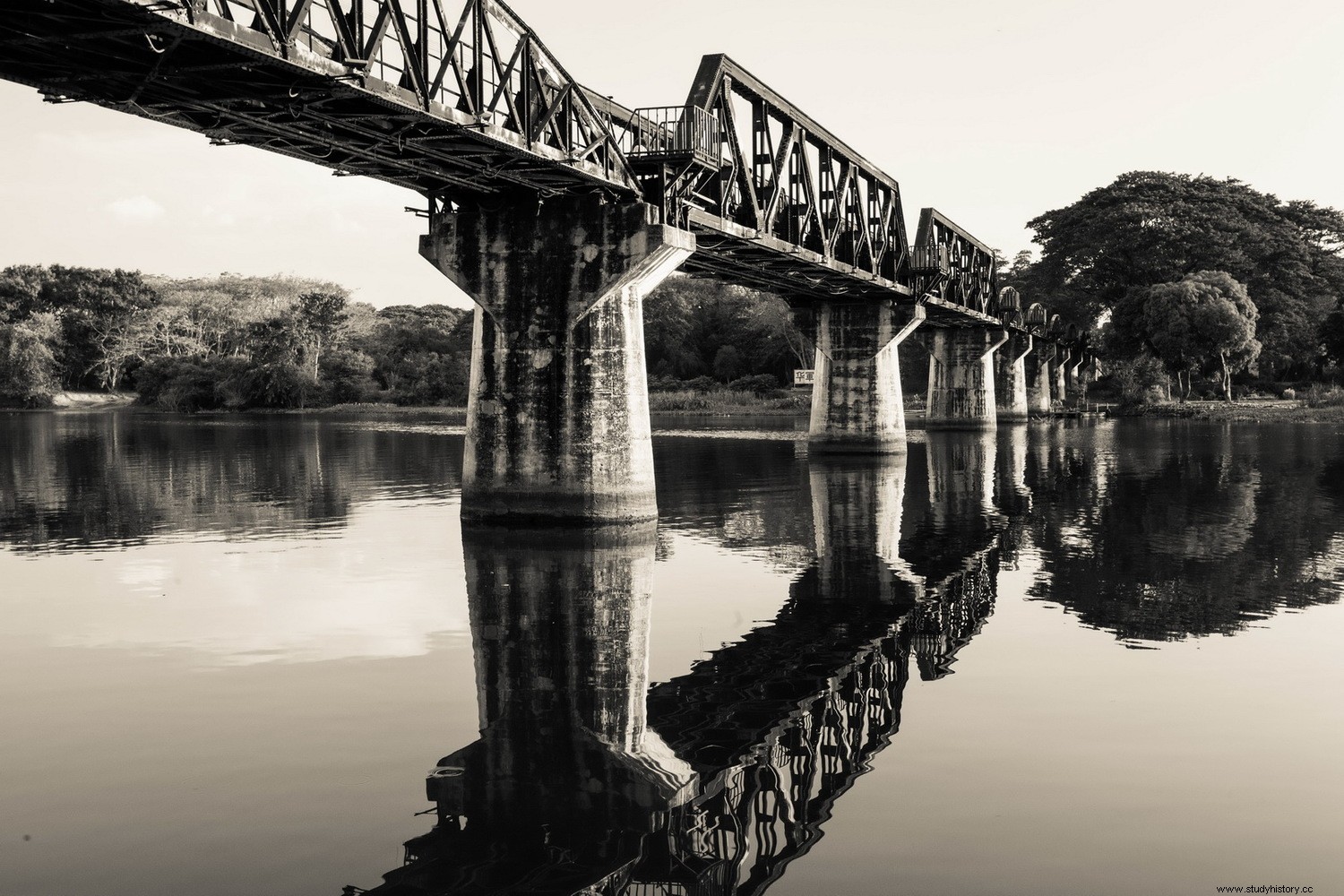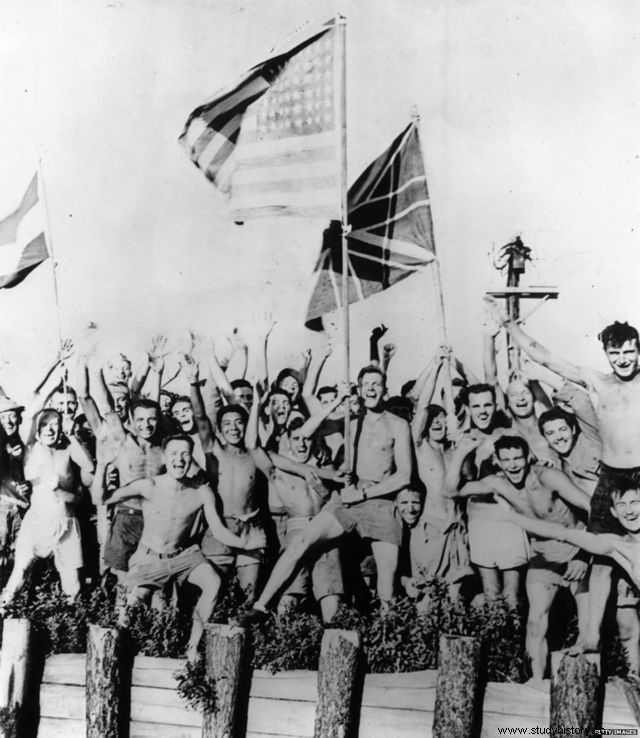Death Railway is a terrible sign of World War II (World War II), which haunts POWs and forced laborers in Siam. Many people are still unaware of the railway. However, they are familiar with the famous tourist attraction:The Bridge on the Kwai River.
WWII created a travesty in the world. No one forgets the horrors that have been seen and done.
Unfortunately, there are several of the atrocities we know. The Allied prisoners of war in Siam (now Thailand) were a cheap source of slave labor for the Japanese. They encountered terrible living and working conditions in the building of the Burma Railway. Another famous name for this railway is 'Death Railway'. While many are still unaware of the railway, they are familiar with a familiar part of it:the Kwai River Bridge, a major tourist attraction.
To survive, prisoners of war and falsely promised workers in Southeast Asia built a connection to help Japan during World War II, with huge losses that haunted the very road they left.
Yet, even with their bravery and perseverance, many believe that the present has forgotten everything they did to survive.
From 'Siam' to 'Thailand'

In Skanskrit, 'Syāma' means dark or brown.
From the 18th century, the country we know as Thailand went by Siam, a derived form of the Sanskrit word. It referred to the skin color of the people.
In the 1780s, the Chakri dynasty ruled the Siam dynasty from the capital Bangkok.
In 1927, the Radical People's Party was formed.
Luang Phibunsongkhram, or Phibun, led a coup against the Chakri king in 1932. The government's setup resembled a Western-style democracy in a parliament. The monarchy survived. However, Phibun took control as dictator in 1938.
As a powerful nationalist and modernizer, Phibun changed the country's name to Thailand. His determination lay in bringing his people into the modern world and emphasizing their unique identity.
The country became Siam again from 1946 to 1948.
In 1948, it became Thailand again, which led to the Kingdom of Thailand officially remaining to this day.
Thailand avoided colonization

In the mid-19th century, Siam followed a 'Mandala' system, a unique and well-established political system. Moreover, the underlying philosophy differed from the European notion. It focused on spheres of influence. Weaker rulers hailed more powerful rulers, with the Siamese king at the top.
Contributing factors
Despite being occupied, Siam remained uncolonized due to several factors.
First, geographically, Siam was in a buffer zone. Their location was between the British colonies on the Malaysian Peninsula and the French colony of Indo-China.
Second, the Siamese king came to an understanding of the Mandala system.
Their political system in Mandala transformed into a more Europeanized version. Mapping was an important aspect. The Siamese king realized the European importance of topographical knowledge. The British and French used maps to define their ruled territory. Undefined borders meant an easy opportunity to claim the land.
Third, the king saw that the Mandala system provided a spread of power.
Local rulers exercised as much power as they could. However, large parts of the country remained inaccessible to any rule. Realistically, the king rules over the whole country. Nevertheless, many areas legally remain many political boundaries.
The Siamese king saw the problem. Therefore, he introduced a standing professional army for the first time in Siamese history. As a result, the king gained more power to control local rulers and regions without supervision. In addition, this led to the abolition of slavery, strengthened religious freedom and the introduction of a postal service and the first railway. In addition, local rulers were deprived of their power and title. Thus, power was transferred and centralized in Bangkok.
In short, the transfer of power proved to be an advantage over Western colonization.
The Siamese language became the official language of the nation. With the calculated maneuvers, Siam seemed western enough to avoid colonization. That is why Europeans saw them as a legitimate state.
Although uncolonized, however, various foreign powers occupied the country.
Thailand's role in World War II

In September 1939, war broke out in Europe.
The main leaders of the Allied forces were the United States (United States), Great Britain, France (before German occupation), the Soviet Union and China. The main leaders of the Axis forces were Germany, Italy and Japan. Siam declared neutrality. The Allied colonies hoped for their support against the Axis powers.
Yet, no matter how neutral they declared themselves, Japan invaded Siam in December 1941. Siam cooperated rather than face a forced invasion. The Japanese marched through the country to invade Malaya (now Malaysia and Singapore) and Burma (now Myanmar), both British colonies.
The first real conflict with the Allies led to the fall of France to Germany, leaving a puppet state under the Vichy government. Siam saw the opportunity to redraw the borders of French Indo-China. However, the Vichy government refused accommodation. Thai troops crossed the border and fought against the French troops. Japan joined Siam's side as part of Germany's political alliance
Lang Pipul, Siam's prime minister at the time, collaborated with the Japanese. He embraced the Axis war goal and wanted to reap the benefits. Therefore, they declared war on the United States and England.
In October 1942, Pipul became a dictator of Siam, a puppet loyal to the Japanese.
The Death Path

In addition to full access to Siam's infrastructure, Japan sought to create a transportation route through Siam and into Burma.
The Japanese Imperial Headquarters in Tokyo went back to an idea from the 19th century. Although it was declared difficult and abandoned, the idea was to build a railway through 260 km of mountain mountains.
The transport route meant less dependence on sea transport, with the Japanese able to move on to India.
Therefore, the construction of the Death Railway began.
Construction began in Burma on September 15, 1942 and Siam in November 1942. The goal was to connect Ban Pong, Siam and Thanbyuzayat, Burma.
Japanese and Korean soldiers on Death Railway
12,000 Japanese soldiers and 800 Korean soldiers worked on the railway. As engineers, guards and supervisors, they got better working conditions. Still, 1,000 Japanese soldiers died.
Despite the death toll, workers remember them as cruel and indifferent to fate. Solid's cruel treatment ranged from corporal punishment, humiliation and neglect to torture and extreme violence.
Southeast Asian workers on Death Railway
Around 180,000 workers were Javanese, Malaysian Tamils, Burmese, Chinese and Siamese to name a few.
In 1943, the Japanese announced work in Malaya, Singapore and Dutch East India (Indonesia today). They promised workers good wages, short contracts and houses for families.
When they arrived in Siam, the Japanese Imperial Army forced them to work on the railroad.
93,000 died, and many deaths were recorded.
Prisoners of War on the Death Railway
The Japanese saw that the use of too many of their workers resulted in the death of diseases. It cost them a lot. They concluded with a cheap source of labor. Therefore, war workers from other Axis POW camps moved to Siam.
They were from the United Kingdom, India, the Netherlands, Dutch East India, Australia and the United States
More than 60,000 Allied soldiers worked on the railway, and a total of 12,621 died during construction.
Living and working conditions on Death Railway
The terrible living and working conditions were due to abuse, illness and hunger. The average was four deaths per 330 meters of track laid.
In each 66-meter-long barracks, soldiers had 60 workers.
Survivors continued to work under the horrific conditions. With the humid climate and monsoons, the disease spread increased. In addition, food shortages and the absence of medical treatment became all too common.
To work on the railway, the workers used primitive equipment. The Japanese knew that there was no hope of getting machines into the jungle from the beginning. Thus, the railway was built by hand.
Workers in isolated areas had a higher mortality rate.
The Japanese estimate that the railway would be completed within five years. It took 16 months ahead of schedule.
After completion, prisoners of war returned to the camps they came from, with the remaining workers transported to nearby camps.
punishment
Failure to comply with an order resulted in being beaten over the face or beaten. Officers handed down the sentence to deter others from doing the same.
Other penalties include:
- Hold large boulders over your head until your arms fail.
- Sweat boxes where a prisoner could not lie down or sit properly.
The Bridge on the River Kwai

This section, also known as Bridge 277 of the Death Railway, is considered the most important in history.
In February 1943, the bridge began as a wooden structure, a temporary measure.
In June 1943, a version of concrete and Indonesian sheet metal served as the permanent structure. Just like the rest of the bridge, prisoners of war built the bridge over the Mae Klong River by hand, without the use of cranes to lift the heavy metal plates.
The infamy for Death Railway's important section is from David Lean's 1957 film, The Bridge on the River Kwai . However, according to film views, the suffering of the prisoners of war downplayed and omitted certain historical facts.
Although the bridge is built on the Mae Klong River, the special part of the river under the bridge was renamed the 'Khwae Yai River' in the 1960s. This associated it with the fictional 'River Kwai'.
Conditions worsened as progress continued, a result of malaria, cholera and malnutrition. The monsoon season of 1943 worsened these conditions.
The path of death against the allied forces
The strategic importance of the bridge on the Kwai River lied in favor of the Allies. It became the main target of the Allied bombing raids.
Between December 1944 and June 1945, Allied planes bombed the bridge, along with another one some distance away. This killed and injured civilians as well as prisoners of war. November 29, 1945, the attacks caused 19 deaths and 68 wounded.
It was not until the raid on February 5, 1945, that 15 wounded were left, that the Japanese evacuated the prisoners downstream.
In 1944, the US Air Force and the British Royal Air Force (RAF) bombed the lines and bridges and destroyed Japanese supply lines. The attacks happened at least ten times more after.
However, this only prolonged the suffering of prisoners of war, who had to repair bridges and lines.
Hellfire passes along the path of death

Also known as Konyu Cutting, it ran along Death Railway. To this day, it symbolizes the suffering of prisoners of war from the mistreatment of the Japanese.
The name of the passport comes from the torch lights that are lit at night. Prisoners of war worked with a glowing red light from the flames. Visually, it represented Hell.
Externally located, forced labor and a lack of tools built the largest rock cut of the entire railway. Prisoners of war and Southeast Asian workers continued, despite poor care.
The original idea for the pass was a tunnel through the hills. However, this required two teams working on each side. For cutting, workers worked on all sides simultaneously. As a result, it required more effort, which led to more deaths of workers. Furthermore, the Japanese forced them to work for 18 hours a day until the passport was completed.
The workers through the harsh conditions completed the workers passport in six weeks.
69 prisoners of war died at the hands of the Japanese guards. Several died of disease, starvation and exhaustion.
Although there is no registration, the Southeast Asian workers suffered the same fate as the prisoners of war.
Hellfire Pass is still a memorial.
Anzac Day is for the Australian and New Zealand prisoners of war who died in Hellfire Pass. Even though the day is for their own inhabitants, they also remember the death of others.
Infamous people from Death Railway

Sergeant Seiichi Okada, also known as 'Doctor Death', worked near Hellfire Pass as a doctor. Despite their failing health, his notoriety lies in sending near-death prisoners of war back to work.
The Geneva Convention did not allow such treatment of prisoners. However, Japan did not sign the treaty. Therefore, they did not follow its rules.
A Korean guard, Arai Koei or 'Mad Mongrel', brutally beat prisoners of war with shovels and bamboo to exercise their authority.
Remarkable people from Death Railway

Sir Edward 'Weary' Dunlop
Edward Dunlop, an Australian doctor, provided assistance to over 1 prisoner of war.
His nickname comes from his "never wear out" resistance. Those he helped became known as 'Dunlop Force' or 'Dunlop's Thousand'.
In March 1943, he moved to the northernmost camp near Hellfire Pass. Using his expertise, he healed prisoners of war and workers suffering from beatings and wilderness.
Japanese soldiers forced a prisoner of war, Billy Griffiths, to uncover a camouflaged and booby-trapped ammunition depot. A blast took the sight and hands. While the Japanese left him for dead, Dunlop cared for him until the end of the war.
After a remarkable recovery and a trip home, Griffiths' Mr. Disabled Athlete of the Year '.
Locals
The locals in Siam were sympathetic to the prisoners of war.
Boon Pong Sirivejjabhondu, a Siam merchant, used the contract with the Japanese Imperial Army to smuggle medicine and radio batteries to sick and dying prisoners of war. The contract allowed him to enter the camps under small management.
The end of World War II and the death knell

In 1945, the Allied forces released the remaining prisoners of death. 111 Japanese military officials were tried for war crimes, focusing on their brutality during the construction of the Death Railway. This resulted in 32 death sentences.
The Southeast Asian workers received no compensation or redress.
As for prisoners of war, they returned to their respective countries after being rescued.
The railway was removed.
JEATH WAR MUSEUM
JEATH stands for (J) apan, (E) ngland, (A) ustralia og (A) merica, (T) hailand og (H) olland.
A chief abbot of the local temple established the museum in 1977. A bamboo hut, similar to the ones the workers were forced to live in, is filled with war memorials. However, the current museum is not the original. Nothing lasts long in the jungle. Former prisoners of war visited the site and judged it a fair copy.
On the other hand, it came as a surprise to see the cabin lined with photographs of healthy prisoners. It showed them work in the open air and in the sun, without harm.
The Japanese allowed prisoners and villagers to take pictures in the early stages. The workload was light, and there were no epidemics of disease yet. In addition, they allowed prisoners to buy food from village traders and shops.
When prisoners began to die, the Japanese banned photographs. Trade was punished with death. Workers still wrote and drew sketches for a while, but hid their pens and pencils by burying them.
Former prisoners of war provided some photographs and illustrations secretly.
War memory ignored?

Many feel that the memory behind Death Railway has been ignored, along with commodified. Many tourists visit the bridge, unaware of its significance for World War II.
There are reports that memories of the war and locomotives go unnoticed. Instead, there are stalls around those who sell clothes, jewelry, souvenirs, souvenirs, trifles and faded photographs from the war. Tourists ride the "Ride on the Death Railway" or take a toy train for a shorter ride across the bridge
Further proof of faith is the annual events in November. A sound and light show in memory of the bombing of the bridge, where the bridge "explodes" in fireworks. A steam train crosses the bridge and honks into the night.
In addition, many see that the estate degrades the landscape around the bridge. New hotels and footpaths have been created for tourists at a high level, and are being created throughout the areas. The war monuments accommodate the large number of tourists, some not as accurate as one might hope.
As a result, it led to damage to the bridge and the integrity of the station. The visual and symbolic connection between Death Railway and WWII has changed and is destroyed.
Significance of the past

The symbolic meaning of "bridge" is to start a union or association. Usually there is always a positive connotation.
However, the bridge over the Kwai River is not just a literal connection. It is a symbolic connection to one of the terrible events of World War II. Innocent men, struggling to survive and support their families, worked hard for a side of the war they opposed.
When we remember the past, remember the battles, we honor the bravery of those who fought. We honor those who fought for freedom, and hear their stories that inspire generations. It gives a sign of bravery, courage and commitment. These are aspects that help individuals grow as they are.
When we remember the past, people learn in the present and future without having to endure.
The past is the only dead thing that smells sweet.
- Edward Thomas, Early One Morning.
